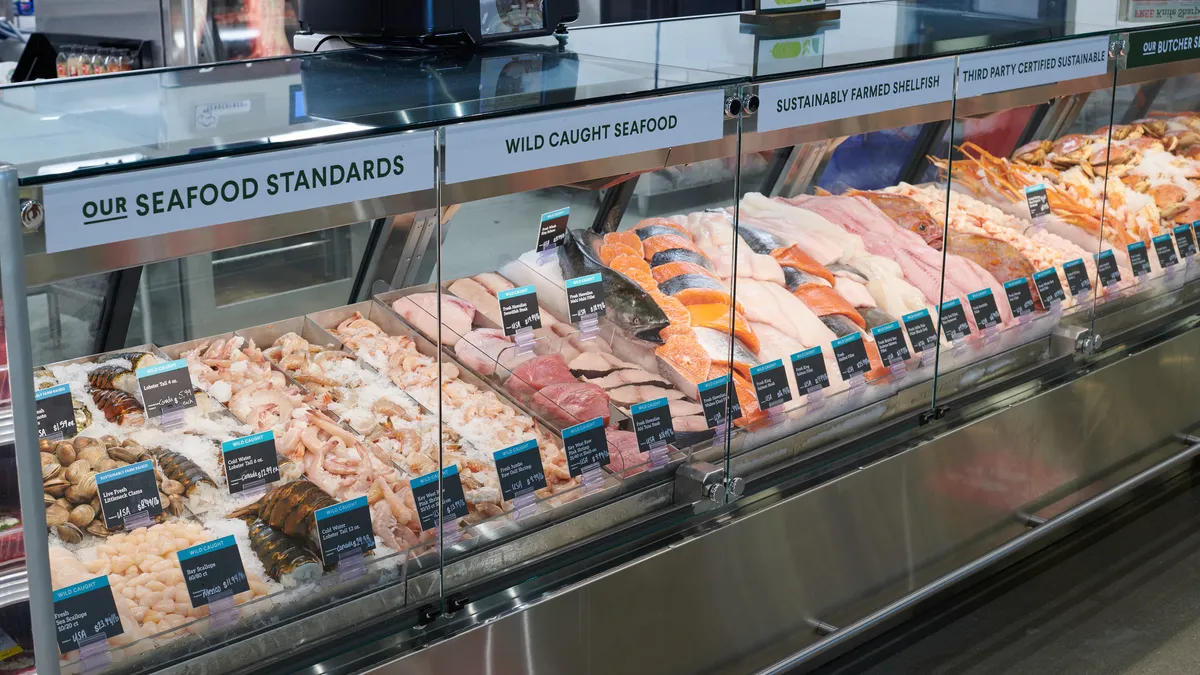Dive Brief:
- Numerator has launched a COVID-19 Buyer Habit Index that reveals which segments showed the most "stickiness" in terms of consumer purchasing behavior, or are most likely to see long-term or permanent shifts, according to a press release. The index tracks categories including alcohol, baking and cooking, beverages, meat and snacks.
- The index compares repeat purchase behavior of new category buyers during the peak of the panic buying in March and April 2020 to new buyers in that same period in 2019. Six repeat purchases by year-end 2020 after a first-time purchase in March or April 2020 qualified as habits. Here, wine stood at the top of the alcohol category with new buyers in 2020 66% more likely than those in 2019 to continue their purchasing habit throughout the rest of the year. Thanks to the home-baked bread obsession, baking ingredients, like flour and blends, also showed stickiness, with the exception of yeast and leaveners.
- Seafood saw higher chances of repurchases than beef and poultry. And despite the sales boom of meat alternatives, the index reveals that consumers of those products were less likely to make repeat purchases of these products in 2020 compared to 2019.
Dive Insight:
As one of the most significant events impacting consumer purchasing in recent history, the COVID-19 pandemic has provided food industry stakeholders with a large swath of data to interpret. As more information comes out one year after the pandemic first took hold across the United States, food manufacturers and retailers are analyzing it to determine which buying trends were temporary and which will lead to more permanent patterns.
Numerator's research largely tracks with previous data-driven findings about the new normal. But one of its major deviations from syndicated sales data is that new purchasers were slightly less likely (-7%) to purchase meat alternatives in 2020 compared to 2019. Meanwhile, Nielsen concluded that meat alternatives saw a 129% boost in sales in the first seven months of the pandemic.
Baking ingredients have also been highlighted as a popular segment during the pandemic, as consumers opted to make items from scratch instead of purchasing premade offerings. However, while Nielsen previously reported yeast was one of the most sought out food items during the pandemic, that purchasing habit may not stick around, per Numerator. Yeast and leaveners ranked fairly low on its index.
In the beverage category, soft drinks saw some stickiness during the pandemic, as event venues and restaurant dining rooms shuttered, forcing consumers with a craving for soda to drink it more at home. Energy and sports drinks also performed well on the Numerator survey. On the other hand, kombucha indexed low, with 22% of new drinkers less likely to have formed a purchasing habit in 2020, even though the beverage is said to have more functional benefits than soda and sports drinks.
Even though puffed snacks and vegetable snacks were the least sticky subcategories in snacks, the survey noted that consumers' purchasing habits would remain about the same compared to previous years.
Two key themes appear across the stickiest segments: Consumers are indulging in foods they may have avoided before the pandemic and have more time to experiment with home cooking. That lines up with a January survey from market research firm Hunter, which found that seven out of 10 consumers plan to keep up their new home cooking habit as they've gained new culinary confidence and curiosity.
A June 2020 study from the International Food Information Council concluded that 60% of consumers are cooking more at home thanks to COVID-19. However, a separate survey by sales and marketing agency Acosta found that dining in is losing its charm for some consumers who are eager to get out of the house and into a restaurant.













